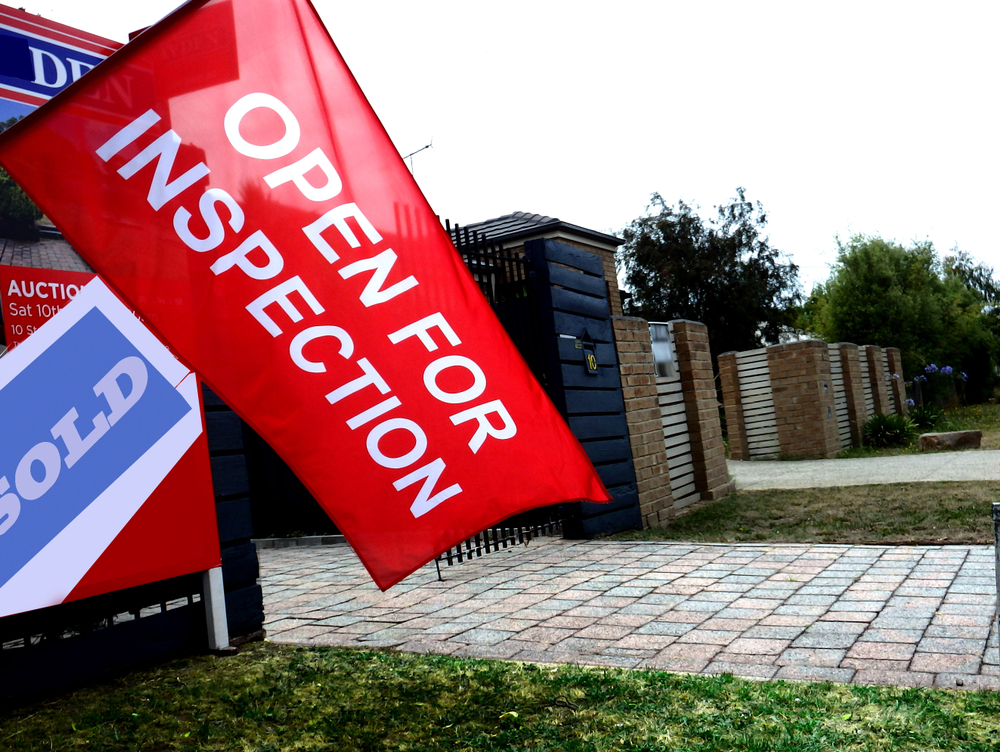When You Have a New Therapist and Her Name Is Zillow
Pretend renovations, houses you’ll never buy: the therapeutic benefits of real-estate fantasies
Ellisha Caplan has exercised , maintained a healthy diet and gotten sleep to manage stress. Lately she’s found something that makes her feel even better: Zillow .
In spare moments, the 47-year-old consultant in Delaware searches real-estate websites for homes in her price range in Philadelphia, where she went to college, and in the small German town where her family has spent several idyllic summers. She looks up nearby restaurants and bike trails, too, imagining her life if she retired there.
“It’s calming, like a massage for my brain,” Caplan says. “I get to let my mind run awhile and just go with the flow.”
Rising prices , few options and high mortgage rates have made home buying uniquely painful right now. But make-believe house hunts are different. They transport people out of their current problems into a fantasy of a better future, a relaxing habit one fantasizer likens to a “digital glass of wine.” I call it Zillow therapy.
Trawling Zillow for alternate versions of your life isn’t the same thing as gawking at real-estate porn, memorably captured in this “ Saturday Night Live ” skit. People using Zillow for therapeutic reasons tend to focus on a specific place, perusing homes they think they can afford and imagining life there. Down the rabbit hole, they cruise Google Maps and local websites for bars, hiking trails or—guilty as charged—bookstores and libraries.
“The fantasy is sustaining,” says Giulia Poerio, a lecturer at the University of Sussex, in the U.K., who studies how daydreaming can help regulate our emotional well-being. “Even if you can’t get what you need right now, you can Zillow it and get a little bit of energy or hope to keep you going.”
Walking trails, room to write
In reporting this column, I heard from people whose Zillow fantasies focus on homes with large backyards, where kids and dogs can romp outside unsupervised, and on places with a detached studio for writing or drawing. Nostalgia powers lots of people’s searches: They look at homes in a childhood town or another place they lived when life seemed simpler. Others use their daydreams to identify what’s missing from their current lives, such as community or nature.
My Zillow therapy sessions centre on Seattle . It’s far from hurricane season in Miami, where I live. I have a close friend there. And there’s plenty of water where I can sail . I search for (and imagine renovating) homes near walking trails and marinas, with a room where I can write with a view of some magnificent trees. Instant Zen.
Looking at worse houses rather than better ones is a balm for some people. Unattractive or cramped homes make them feel better about where they currently live, especially if their own home is less expensive. Psychologists call this phenomenon downward social comparison.
“If you want to see the 900 square feet that $1.8 million can get you, just put in a San Francisco ZIP Code,” says Hooria Jazaieri, an assistant professor of management at Santa Clara University’s business school who studies how people regulate their emotions. “It’s a great way to make you feel grateful.”
Zillow is helping Bill Marklein, 39, get through an expensive kitchen remodel—he and his wife have a baby daughter and have been doing dishes in the bathtub for months. He browses listings in his price range within a 30-mile radius of his home in Plymouth, Wis., lingering on the kitchens. Nice ones make him feel good about his investment. But hideous ones with 1970s avocado-green cabinets or battered white refrigerators sticking out into the room cheer him up, too.
“It’s like having a digital glass of wine,” says the business owner. “It shows you that life isn’t so bad.”
The limits of Zillow therapy
Zillow’s user data suggests that plenty of us are doing this. The company’s real-estate websites and apps, which include Trulia and StreetEasy, have a combined 217 million average unique monthly users. Yet just slightly more than four million existing homes were sold in the U.S. last year, according to the National Association of Realtors.
Zillow is “not a replacement for therapy,” says the company’s home trends expert Amanda Pendleton, though it can give people an emotional boost.
“It’s a judgment-free zone,” she says. “Unlike on social media, no one is going to comment on the home you’re looking up and tell you it’s a terrible choice.”
Still, there are drawbacks to spending too much time in our imagination.
“The fantasies zap your energy,” says Gabriele Oettingen, a professor of psychology at New York University, who studies the psychology of motivation. Her research shows that while people who have positive fantasies about the future feel better in the moment, they often don’t achieve the goals they’re dreaming about. “Your attention is away from your current reality,” Oettingen says.
The solution, if you want to make your dream come true, is to identify the obstacle in the way of achieving your goal, she says. If you can’t move right now, accept that and choose a more immediate goal. Can’t buy a house in the seaside town your family vacationed in as a child? Plan a trip to the beach.
And if you’re serious about a future move, take steps to make it a reality down the road.
Elizabeth Uslander, 42, lives in San Diego but enjoys perusing house listings in small towns in the Colorado mountains to help her cope with the pressures of running a business and blending her family with her new husband’s. She looks for homes with direct access to nature and enough bedrooms for all, then researches how close they are from the ski slopes, shops and the local bar.
She shares her favorite listings with her husband, which she says is “like making drip castles in the sandbox with your bestie.” Recently, they found a home they like so much near Steamboat Springs that they visited it—and then bought it.
They have no plans to move right now but plan to visit often. Uslander says that just owning it makes her feel that her current stressors are temporary.
“I actually made the fantasy come to life,” she says.
 Copyright 2020, Dow Jones & Company, Inc. All Rights Reserved Worldwide. LEARN MORE
Copyright 2020, Dow Jones & Company, Inc. All Rights Reserved Worldwide. LEARN MORE
A divide has opened in the tech job market between those with artificial-intelligence skills and everyone else.
A 30-metre masterpiece unveiled in Monaco brings Lamborghini’s supercar drama to the high seas, powered by 7,600 horsepower and unmistakable Italian design.
Buyer demand, seller confidence and the First Home Guarantee Scheme are setting up a frantic spring, with activity likely to run through Christmas.
The spring property market is shaping up as the most active in recent memory, according to property experts Two Red Shoes.
Mortgage brokers Rebecca Jarrett-Dalton and Brett Sutton point to a potent mix of pent-up buyer demand, robust seller confidence and the First Home Guarantee Scheme as catalysts for a sustained run.
“We’re seeing an unprecedented level of activity, with high auction numbers already a clear indicator of the market’s trajectory,” said Sutton. “Last week, Sydney saw its second-highest number of auctions for the year. This kind of volume, even before the new First Home Guarantee Scheme (FHGS) changes take effect, signals a powerful market run.”
Rebecca Jarrett-Dalton added a note of caution. “While inquiries are at an all-time high, the big question is whether we will have enough stock to meet this demand. The market is incredibly hot, and this could lead to a highly competitive environment for buyers, with many homes selling for hundreds of thousands above their reserve.”
“With listings not keeping pace with buyer demand, buyers are needing to compromise faster and bid harder.”
Two Red Shoes identifies several spring trends. The First Home Guarantee Scheme is expected to unlock a wave of first-time buyers by enabling eligible purchasers to enter with deposits as low as 5 per cent. The firm notes this supports entry and reduces rent leakage, but it is a demand-side fix that risks pushing prices higher around the relevant caps.
Buyer behaviour is shifting toward flexibility. With competition intense, purchasers are prioritising what they can afford over ideal suburb or land size. Two Red Shoes expects the common first-home target price to rise to between $1 and $1.2 million over the next six months.
Affordable corridors are drawing attention. The team highlights Hawkesbury, Claremont Meadows and growth areas such as Austral, with Glenbrook in the Lower Blue Mountains posting standout results. Preliminary Sydney auction clearance rates are holding above 70 per cent despite increased listings, underscoring the depth of demand.
The heat is not without friction. Reports of gazumping have risen, including instances where contract statements were withheld while agents continued to receive offers, reflecting the pressure on buyers in fast-moving campaigns.
Rates are steady, yet some banks are quietly trimming variable and fixed products. Many borrowers are maintaining higher repayments to accelerate principal reduction. “We’re also seeing a strong trend in rent-vesting, where owner-occupiers are investing in a property with the eventual goal of moving into it,” said Jarrett-Dalton.
“This is a smart strategy for safeguarding one’s future in this competitive market, where all signs point to an exceptionally busy and action-packed season.”
Two Red Shoes expects momentum to carry through the holiday period and into the new year, with competition remaining elevated while stock lags demand.
Now complete, Ophora at Tallawong offers luxury finishes, 10-year defect insurance and standout value from $475,000.
In the remote waters of Indonesia’s Anambas Islands, Bawah Reserve is redefining what it means to blend barefoot luxury with environmental stewardship.























